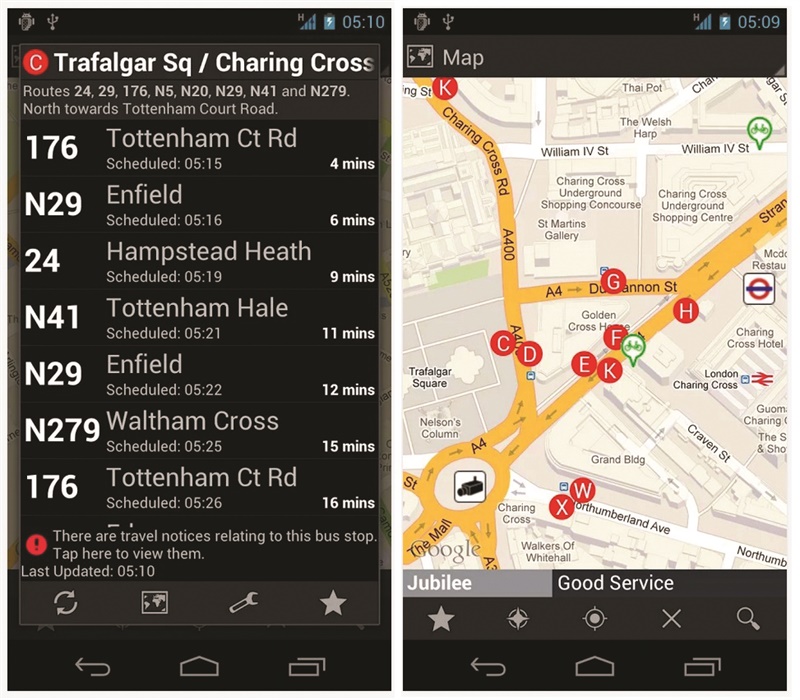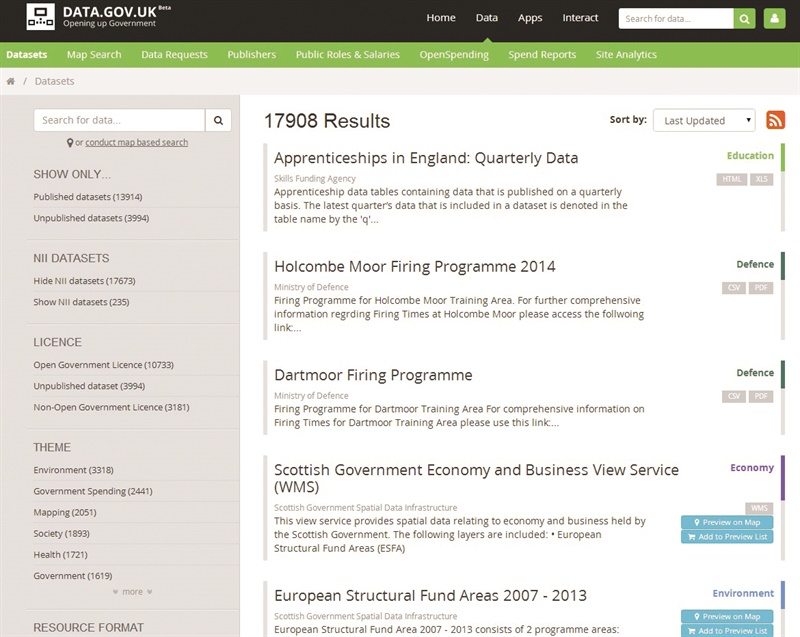16.04.14
The benefits of open data
Source: Public Sector Executive April/May 2014
The Cabinet Office has made £150,000 available for Open Data training. Kathryn Corrick, head of content and learning at the Open Data Institute, which will conduct the training, explains the benefits of open data and the technological drive behind it.
As part of the government’s ambitions to improve transparency, efficiency and understanding of open data, the Cabinet Office has given £150,000 to the Open Data User Group to train departmental staff on its benefits. The training, which will be delivered by the Open Data Institute (ODI), is aimed at accelerating the adoption of open data practices across the civil service.
The funding, provided as part of the Release of Data Fund, is broken down into two separate parts. A £50,000 fund will enable 74 key departmental staff to attend ODI courses, while a further £100,000 will go towards embedding open data in public procurement activities, and training 120 procurement officers.
Kathryn Corrick, head of content and learning at the ODI, told PSE that she is excited to support more civil servants getting up to speed with the latest developments in publishing and using open data. She said: “There’s no doubt that the UK is a world leader in releasing public sector information as open data. This training will ensure the quality and usability of that data for everyone.”
ODI training
The training is delivered either as part of a one-day ‘Open Data in a Day’ course or a five-day ‘Open Data in Practice’ programme.
Corrick told PSE that the Open Data in a Day is “a crash course, designed for everyone”. The introductory course aims to get people up to speed with the latest developments in open data and its significance. It is designed to enable anyone to get started with discovering and using open data and understand the skills and processes required to make it work for them and their organisation.
The Open Data in Practice is, however, more intensive and designed for people who have to do this as a big part of their job. Corrick said: “In the past we have had people who are project managers, programme managers and so on who have been told they are in charge of open data for the department, or this particular project or piece of policy – the course provides an introduction to the technical, commercial and legal aspects of open data. It aims to highlight key opportunities for working with open data and how they can be exploited across government, business and society.”
It is designed as a ‘zero to hero’ programme, enabling anyone to understand how to publish, consume and exploit open data, as well as give an understanding of best practice, law, licensing and policy issues. Key to the course is for participants to gain hands-on experience through the week.
“The whole purpose of the course is that by the following week, when people go back to their desk from the course, they have practical skills they can put in place,” said Corrick. “This is not theoretical – it is all about how they can make open data work, how they think about it, what software might be required, and how they are going to encourage colleagues to take it up. It is all very practical.”
She added that those who usually attend the course become a conduit of open data information in their organisations; training their colleagues on the benefits and basics.
Benefits
The benefits of open data training, however, depend on what a particular organisation is looking for, noted Corrick. For government and the public sector generally, there are three core benefits: economic, social and transparency.
Economic benefits include the simple placing of data out in the public domain, so businesses can make use of it.
Corrick said: “I think the Department for Transport is probably the best example there because through the Transport for London (TfL) it provides its live feed of traffic data for developers to build applications that then serve as information portals on travel routes around the capital. People then pay for the apps as it gives them information they didn’t have before in a format that they want and can use. This in turn creates a great loop, as the economic benefit is multiple, it is not just a business it improves the efficiency for the country.”
PSE’s sister title Rail Technology Magazine explored these issues with head of TfL Online, Phil Young, in a previous edition.
He said then: “We started out in 2007, looking initially at widgets, rather than data, as part of our work to explain the Tube upgrade programme – or the London Underground Investment Programme as it was then. We still have them at www.tfl.gov.uk/widgets – they’re pieces of pre-compiled HTML code that people can put onto their website.
“That was our first foray into this: we did the Tube map, live travel news and weekend disruption. It was always our intention, influenced by things like BBC Backstage, their developers’ area, to do much more for developers. That coincided in 2009 with the app development market really growing and the rise of smartphones.”
In 2009, TfL launched its own developers’ area, with a handful of data feeds, and by 2010 hundreds of developers had registered. That number has since grown into the thousands, and there are about 200 apps available making use of TfL’s open data.

Young said: “I don’t know of another authority in the country that’s as advanced as we are with this. Across Europe even, there are very few who are anywhere near the developments we’ve made. We’re one of the leaders in this, and we’re working with colleagues in transport authorities across Europe to explain to them what we’re doing and to encourage them to work along similar lines.”
Open Data Challenge Series
Corrick also explained how the Open Data Challenge Series looks at social issues to deliver benefits, starting with crime and justice. The winning idea was about using open data to cut the number of bicycle thefts. “It was very practical but important for many people,” she said.
Then, finally, there are the transparency benefits. Corrick told PSE the government’s agenda for driving transparency, across all areas, has been important in driving the change.
“And open data is just one of the ways in increasing transparency,” she said.
Data drive
However, Corrick added: “For me, as a trainer, open data is very abstract. Not everyone actually has an understanding of what ‘data’ really is. There has been a general illiteracy around statistics and understanding what these things are and their potential.
“But, alongside that, there has been a fundamental change in technology that has meant the cost involved is much, much cheaper.”
That lowering cost is one of the reasons open data is becoming of such interest, particularly to the public sector, she said. “We’ve had big data for a very long time, but what we haven’t necessarily been able to do is to process it quickly and cheaply,” she said. “Open data is becoming more important because several things are coming together.
“It is where technology is, where policy is, where also the desire for transparency and trust is – not just in government but for companies and even charities. There is a greater demand for saying ‘I want to know what you are doing’.”
 Kathryn Corrick, head of content and learning at the Open Data Institute
Kathryn Corrick, head of content and learning at the Open Data Institute
Making government data available to all
The government’s data.gov.uk site, currently at the beta testing phase, contains a huge variety of datasets, of varying quality and in different formats (most are spreadsheets, but many remain in formats that make it difficult to usefully interrogate the data, such as PDFs and HTML).
Each dataset is given a star rating out of five for its openness score, from one star (unstructured data in PDF format) to five (linked data with URIs, uniform resource identifiers, linked to other data).
The following list gives a flavour of who is publishing datasets and what about:
• United Kingdom Hydrographic Office (1432)
• Office for National Statistics (1144)
• Department for Communities and Local Government (822)
• NHS Information Centre for Health and Social Care / Health and Social Care Information Centre (652)
• Northern Ireland Spatial Data Infrastructure (588)
• Environment Agency (547)
• Department for Environment, Food and Rural Affairs (502)
• Her Majesty’s Revenue and Customs (411)
• British Geological Survey (366)
• Centre for Ecology & Hydrology (361)
When PSE checked, the most recently modified dataset belonged to Skills for Life in England, which provides annually updated Skills for Life Qualifications data broken down by age, level, provider type, geography and learner demographics.
This is published under the Open Government Licence 2.0, meaning it can be copied, published, distributed, transmitted, adapted, and exploited commercially and non-commercially, as long as the source of the data is acknowledged and attributed. The licence does not cover personal information, logos and crests, identity documents and intellectual property rights.

The most popular dataset was the Bona Vacantia Unclaimed Estates and Adverts, which helps people check if they are entitled to anything from the estate of a dead relative. The dataset, downloadable and viewable as a spreadsheet, contains, when PSE checked, 10,273 people who died between 1971 and 2014 (and one who supposedly died in 9910, which we assume is an error rather than evidence of time travel). The data includes useful identifying information for each person, plus a reference number, and, where available, additional notes that have been added to each case file (‘Death was registered by a cousin’; ‘Believed that first husband, whom she married in Italy, died during Second World War’; ‘May have been born in Stoke on Trent’).
Ollie Buckley, who leads the Transparency Team at the Cabinet Office, said in a blogpost in February: “As a team, we see three elements to our mission: getting high quality data out of government and into the public’s hands; bringing the power of open data to a wider audience – including finding ways to encourage develops to create transformative applications; maintaining Britain’s global position as a leader on open data and transparency.”
He said 2014 will be about the ‘next wave’ of open data, including big new releases from local government; standard transparency clauses in central government contracts; developing the National Information Infrastructure; and leveraging UK leadership internationally, such as encouraging wider adoption of the Open Data Charter beyond the G8.